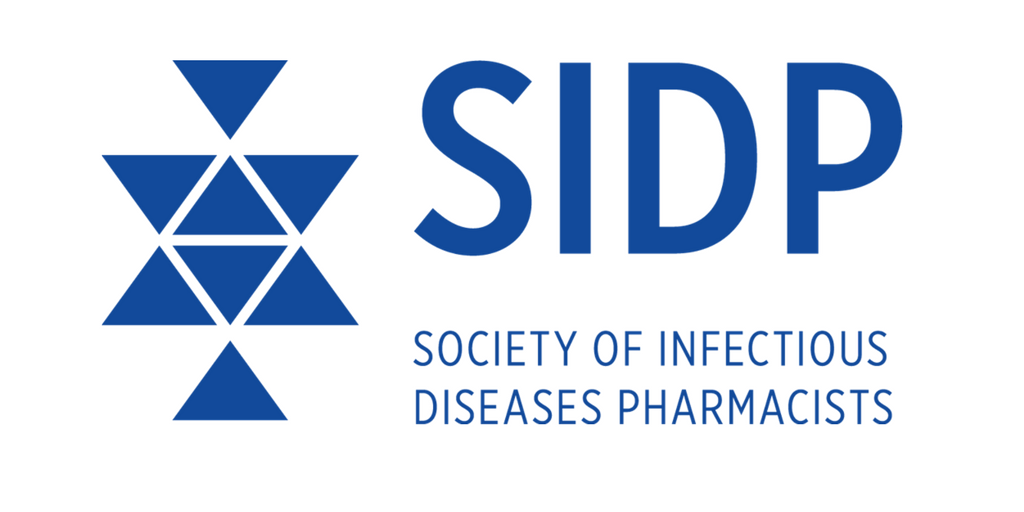Infectious disease (ID), antimicrobial stewardship (ASP), and the inextricable link with public health have become increasingly important areas of study and practice in recent decades due to shifting disease patterns, the emergence of new infectious pathogens, and the adoption of a One Health approach. As defined by the World Health Organization, a One Health approach is intended to be a comprehensive and unifying perspective to balance and optimize human, domestic and wild animals, plants, and the wider environment when considering the impact on an ecosystem.1 Pharmacists play a crucial role in ASP and ID teams, positively impacting antimicrobial use and therefore the One Health approach.2–5
Our clinical, didactic, and experience-based education programs prepare learners for the myriad of experiences and opportunities that can be obtained within the space of ID; however, the breadth and depth of knowledge obtained from published studies as a new practicing clinician can be overwhelming due to the quantity of evidence that becomes available on a daily basis. Resources such as the Society of Infectious Diseases Pharmacists (SIDP)’s “Breakpoints.” and the “Infectious Disease Puscast,” as well as other tertiary references offer timely updates on important clinical topics. Therefore, in the spirit of supporting learners in the ID space, we present our top five recommended topics with resources that every ID learner should explore.
Busting Some Myths
Some of our recommended readings challenge common misconceptions and highlight evolving practices in antimicrobial use. A recent publication summarizes some of the commonly held myths in the ID world.6 Rather than going into detail on each topic here, we suggest that you review the table below and use the references in the table as well as the article by McCreary et al, for further reading.
Place in Therapy for Oral Antibiotics
Over the last decade, there has been a notable shift towards the use of oral therapies in complex infections ranging from bacteremias to endocarditis, and osteomyelitis. A systematic review conducted by Wald-Dickler et al. summarizes recent evidence supporting the use of oral (PO) therapies where intravenous (IV) was generally considered the gold standard.27 Below we summarize two landmark studies that were discussed in the review but in total, the authors describe 21 studies. We would recommend reading through the entire paper. The authors also conducted meta-analyses of studies for the treatment of osteomyelitis, bacteremia, and endocarditis. For osteomyelitis and bacteremia, the meta-analyses showed no statistical difference between PO and IV for treatment success. For endocarditis, PO was more likely to result in statistically significant treatment success than IV in a meta-analysis of four studies. It is important that clinicians consider the different facets of the described studies, such as IV lead-in periods and inclusion criteria when determining generalizability and transportability to their respective populations.
Is Shorter Better and When?
Antibiotic durations are easy to remember if you can remember that there are 5 fingers on each hand, and 7 days in every week.
“In AD 321, Roman Emperor Constantine the Great codified that there would be 7 days in a week. …this [1700]-year-old decree remains a primary reference for duration of antibiotic therapy: it leads physicians to treat infections in intervals of 7 days.”30
Determining the optimal duration for treatment of an infection can be challenging. Historically longer treatment durations were believed to prevent antibiotic resistance; however, the opposite is likely true. Prolonged antibiotics can lead to resistance in commensal bacteria. The rationale behind shorter courses of antibiotics is three-fold. Firstly, by reducing the time patients are on antibiotics, we lessen the likelihood of adverse outcomes, such as Clostridioides difficile. Secondly, shorter durations result in lower overall exposure of commensal organisms to the antibiotic, therefore lowering the likelihood of resistance developing. Lastly, shorter durations decrease healthcare costs. The table below, based on commentary by Spellberg and Rice, provides examples of treatment durations for common infections, and the exceptions where shorter is not better. 31 Keep in mind, of course, that not all infections are bacterial and thus do not require any antibiotics (eg bronchitis). Also note that the table below is not all inclusive; rather, it is a summary of commonly seen infections in the acute care setting. For further resources, we suggest reviewing Brad Spellberg’s, MD, website.
Bacteriostatic or Bactericidal?
When antibiotic therapies are newly discovered, a component of determining efficacy in vitro is assessing the agent’s ability to both inhibit bacterial growth and to kill the bacteria of interest.48 However, the clinical application of these in-vitro standards tends to be less clear. Two notable publications on this topic are by Pankey and Sabbath in 200448 and Wald-Dickler et al, in 2018.49 We will highlight select studies from Wald-Dickler et al, and suggest that readers review the supplementary material that lists prospective RCTs comparing bacteriostatic and bactericidal agents. However, both publications offer engaging insights into the “static” versus “cidal” debate.
Penicillin Allergies: Oral Challenge and A Risk Stratification Algorithm
Another important area for ASP consideration that impacts both the safety and efficacy of antimicrobial use is the presence of penicillin allergy labels. Approximately 10% of the general population carries the label of penicillin allergy on their electronic medical record, with a prevalence closer to 15% for hospitalized individuals.53,54 The presence of penicillin allergy labels is associated with prolonged length of stay,55 increased adverse effects and worse clinical outcomes,56 higher rates of surgical site infections,57 and an increased risk of multidrug-resistant organisms.58 About 90% of penicillin allergies can be safely delabeled using various approaches such as penicillin skin testing (PST) or oral challenge (OC).59-61 Below are 2 studies that describe both risk stratification of penicillin allergies in surgical patients, and the use of oral challenge in low-risk individuals. These studies are selected since PST is often difficult to conduct in a time-constrained setting and can result in over-labeling in patients with low risk allergies (such as remote non-severe rash or gastrointestinal symptoms) due to low sensitivity. 62,63 This can be a significant limitation given that low-risk penicillin allergies make up about 40% to 50% of the population with a penicillin allergy label. 59,64
We hope that this resource gives learners the opportunity to explore some cutting-edge research in ID and ASP that every ID learner should read about, at least once. This should serve as a starting point for finding primary literature on the topics discussed so learners can dig into more details, consider the evidence, and continue to contribute to the One Health approach through optimizing antimicrobial use.
References
1.One Health [Internet]. [cited 2024 Jun 15]. Available from: https://www.who.int/news-room/questions-and-answers/item/one-health
2.Martinez YG, Tran M, Roduta T, Lam S, Price T, Stramel S. The Impact of an Antimicrobial Stewardship Clinical Pharmacy Specialist on Antimicrobial Days of Therapy through Education Driven Policies, Procedures, and Interventions. Pharmacy. 2023 Aug 30;11(5):137.
3.Bohn BC, Neuner EA, Athans V, Rivard KR, Riffle AR, Richter SS, et al. The Implementation and Effect of Weekend Pharmacy-Driven Antimicrobial Stewardship Services at a Large Academic Medical Center. J Pharm Pract. 2022 Aug;35(4):541–5.
4.Monmaturapoj T, Scott J, Smith P, Abutheraa N, Watson MC. Pharmacist-led education-based antimicrobial stewardship interventions and their effect on antimicrobial use in hospital inpatients: a systematic review and narrative synthesis. J Hosp Infect. 2021 Sep;115:93–116.
5.McEwen SA, Collignon PJ. Antimicrobial Resistance: a One Health Perspective. Microbiol Spectr. 2018 Mar 29;6(2):10.1128/microbiolspec.arba-0009–2017.
6.McCreary EK, Johnson MD, Jones TM, Spires SS, Davis AE, Dyer AP, et al. Antibiotic Myths for the Infectious Diseases Clinician. Clin Infect Dis Off Publ Infect Dis Soc Am. 2023 Oct 13;77(8):1120–5.
7.Grégoire M, Gaborit B, Deschanvres C, Lecomte R, Deslandes G, Dailly É, et al. High-Dosage Cefazolin Achieves Sufficient Cerebrospinal Diffusion To Treat an External Ventricular Drainage-Related Staphylococcus aureus Ventriculitis. Antimicrob Agents Chemother. 2019 Jan 29;63(2):10.1128/aac.01844-18.
8.Antosz K, Battle S, Chang J, Scheetz MH, Al-Hasan M, Bookstaver PB. Cefazolin in the treatment of central nervous system infections: A narrative review and recommendation. Pharmacotherapy. 2023 Jan;43(1):85–95.
9.Butterfield JM, Lawrence KR, Reisman A, Huang DB, Thompson CA, Lodise TP. Comparison of serotonin toxicity with concomitant use of either linezolid or comparators and serotonergic agents: an analysis of Phase III and IV randomized clinical trial data. J Antimicrob Chemother. 2012 Feb;67(2):494–502.
10.Kufel WD, Parsels KA, Blaine BE, Steele JM, Seabury RW, Asiago-Reddy EA. Real-world evaluation of linezolid-associated serotonin toxicity with and without concurrent serotonergic agents. Int J Antimicrob Agents. 2023 Jul 1;62(1):106843.
11.Matsumoto K, Takeshita A, Ikawa K, Shigemi A, Yaji K, Shimodozono Y, et al. Higher linezolid exposure and higher frequency of thrombocytopenia in patients with renal dysfunction. Int J Antimicrob Agents. 2010 Aug;36(2):179–81.
12.Crass RL, Cojutti PG, Pai MP, Pea F. Reappraisal of Linezolid Dosing in Renal Impairment To Improve Safety. Antimicrob Agents Chemother. 2019 Jul 25;63(8):10.1128/aac.00605-19.
13.Terico AT, Gallagher JC. Beta-Lactam Hypersensitivity and Cross-Reactivity. J Pharm Pract. 2014 Dec 1;27(6):530–44.
14.Bratzler DW, Dellinger EP, Olsen KM, Perl TM, Auwaerter PG, Bolon MK, et al. Clinical practice guidelines for antimicrobial prophylaxis in surgery. Am J Health-Syst Pharm AJHP Off J Am Soc Health-Syst Pharm. 2013 Feb 1;70(3):195–283.
15.Alexander AJ, Richardson SE, Sharma A, Campisi P. The increasing prevalence of clindamycin resistance in Staphylococcus aureus isolates in children with head and neck abscesses. Can J Infect Dis Med Microbiol. 2011;22(2):49–51.
16.White BP, Siegrist EA. Increasing clindamycin resistance in group A streptococcus. Lancet Infect Dis. 2021 Sep;21(9):1208–9.
17.Miller LG, Daum RS, Creech CB, Young D, Downing MD, Eells SJ, et al. Clindamycin versus trimethoprim-sulfamethoxazole for uncomplicated skin infections. N Engl J Med. 2015 Mar 19;372(12):1093–103.
18.Bowen AC, Carapetis JR, Currie BJ, Fowler V Jr, Chambers HF, Tong SYC. Sulfamethoxazole-Trimethoprim (Cotrimoxazole) for Skin and Soft Tissue Infections Including Impetigo, Cellulitis, and Abscess. Open Forum Infect Dis. 2017 Oct 1;4(4):ofx232.
19.Huttner A, Kowalczyk A, Turjeman A, Babich T, Brossier C, Eliakim-Raz N, et al. Effect of 5-Day Nitrofurantoin vs Single-Dose Fosfomycin on Clinical Resolution of Uncomplicated Lower Urinary Tract Infection in Women: A Randomized Clinical Trial. JAMA. 2018 May 1;319(17):1781–9.
20.Doern CD. Fosfomycin Susceptibility Testing. Clin Microbiol Newsl. 2020 Feb 15;42(4):27–31.
21.Ryder JH, Tong SYC, Gallagher JC, McDonald EG, Thevarajan I, Lee TC, et al. Deconstructing the Dogma: Systematic Literature Review and Meta-analysis of Adjunctive Gentamicin and Rifampin in Staphylococcal Prosthetic Valve Endocarditis. Open Forum Infect Dis. 2022 Nov 1;9(11):ofac583.
22.Le Bot A, Lecomte R, Gazeau P, Benezit F, Arvieux C, Ansart S, et al. Is Rifampin Use Associated With Better Outcome in Staphylococcal Prosthetic Valve Endocarditis? A Multicenter Retrospective Study. Clin Infect Dis Off Publ Infect Dis Soc Am. 2021 May 4;72(9):e249–55.
23.Cosgrove SE, Vigliani GA, Fowler VG, Abrutyn E, Corey GR, Levine DP, et al. Initial low-dose gentamicin for Staphylococcus aureus bacteremia and endocarditis is nephrotoxic. Clin Infect Dis Off Publ Infect Dis Soc Am. 2009 Mar 15;48(6):713–21.
24.Klein NC, Cunha BA. Tetracyclines. Med Clin North Am. 1995 Jul;79(4):789–801.
25.Cooper WO, Hernandez-Diaz S, Arbogast PG, Dudley JA, Dyer SM, Gideon PS, et al. Antibiotics potentially used in response to bioterrorism and the risk of major congenital malformations. Paediatr Perinat Epidemiol. 2009 Jan;23(1):18–28.
26.Research C for DE and. Doxycycline Use by Pregnant and Lactating Women. FDA [Internet]. 2018 Mar 11 [cited 2024 Jun 17]; Available from: https://www.fda.gov/drugs/bioterrorism-and-drug-preparedness/doxycycline-use-pregnant-and-lactating-women
27.Wald-Dickler N, Holtom PD, Phillips MC, Centor RM, Lee RachaelA, Baden R, et al. Oral Is the New IV. Challenging Decades of Blood and Bone Infection Dogma: A Systematic Review. Am J Med. 2022 Mar;135(3):369-379.e1.
28.Iversen K, Ihlemann N, Gill SU, Madsen T, Elming H, Jensen KT, et al. Partial Oral versus Intravenous Antibiotic Treatment of Endocarditis. N Engl J Med. 2019 Jan 31;380(5):415–24.
29.Li HK, Rombach I, Zambellas R, Walker AS, McNally MA, Atkins BL, et al. Oral versus Intravenous Antibiotics for Bone and Joint Infection. N Engl J Med. 2019 Jan 31;380(5):425–36.
30.Spellberg B. The New Antibiotic Mantra—“Shorter Is Better.” JAMA Intern Med. 2016 Sep 1;176(9):1254–5.
31.Spellberg B, Rice LB. Duration of Antibiotic Therapy: Shorter Is Better. Ann Intern Med. 2019 Aug 6;171(3):210–1.
32.Falagas ME, Karageorgopoulos DE, Grammatikos AP, Matthaiou DK. Effectiveness and safety of short vs. long duration of antibiotic therapy for acute bacterial sinusitis: a meta-analysis of randomized trials. Br J Clin Pharmacol. 2009 Feb;67(2):161–71.
33.Drekonja DM, Trautner B, Amundson C, Kuskowski M, Johnson JR. Effect of 7 vs 14 Days of Antibiotic Therapy on Resolution of Symptoms Among Afebrile Men With Urinary Tract Infection: A Randomized Clinical Trial. JAMA. 2021 Jul 27;326(4):324–31.
34.Sandberg T, Skoog G, Hermansson AB, Kahlmeter G, Kuylenstierna N, Lannergård A, et al. Ciprofloxacin for 7 days versus 14 days in women with acute pyelonephritis: a randomised, open-label and double-blind, placebo-controlled, non-inferiority trial. Lancet Lond Engl. 2012 Aug 4;380(9840):484–90.
35.Klausner HA, Brown P, Peterson J, Kaul S, Khashab M, Fisher AC, et al. A trial of levofloxacin 750 mg once daily for 5 days versus ciprofloxacin 400 mg and/or 500 mg twice daily for 10 days in the treatment of acute pyelonephritis. Curr Med Res Opin. 2007 Nov;23(11):2637–45.
36.Sawyer Robert G., Claridge Jeffrey A., Nathens Avery B., Rotstein Ori D., Duane Therese M., Evans Heather L., et al. Trial of Short-Course Antimicrobial Therapy for Intraabdominal Infection. N Engl J Med. 2015;372(21):1996–2005.
37.Hepburn MJ, Dooley DP, Skidmore PJ, Ellis MW, Starnes WF, Hasewinkle WC. Comparison of short-course (5 days) and standard (10 days) treatment for uncomplicated cellulitis. Arch Intern Med. 2004 Aug 9;164(15):1669–74.
38.Moran GJ, Fang E, Corey GR, Das AF, De Anda C, Prokocimer P. Tedizolid for 6 days versus linezolid for 10 days for acute bacterial skin and skin-structure infections (ESTABLISH-2): a randomised, double-blind, phase 3, non-inferiority trial. Lancet Infect Dis. 2014 Aug;14(8):696–705.
39.Cranendonk DR, Opmeer BC, van Agtmael MA, Branger J, Brinkman K, Hoepelman AIM, et al. Antibiotic treatment for 6 days versus 12 days in patients with severe cellulitis: a multicentre randomized, double-blind, placebo-controlled, non-inferiority trial. Clin Microbiol Infect Off Publ Eur Soc Clin Microbiol Infect Dis. 2020 May;26(5):606–12.
40.Bernard L, Dinh A, Ghout I, Simo D, Zeller V, Issartel B, et al. Antibiotic treatment for 6 weeks versus 12 weeks in patients with pyogenic vertebral osteomyelitis: an open-label, non-inferiority, randomised, controlled trial. Lancet Lond Engl. 2015 Mar 7;385(9971):875–82.
41.Tone A, Nguyen S, Devemy F, Topolinski H, Valette M, Cazaubiel M, et al. Six-week versus twelve-week antibiotic therapy for nonsurgically treated diabetic foot osteomyelitis: a multicenter open-label controlled randomized study. Diabetes Care. 2015 Feb;38(2):302–7.
42.Li Q, Zhou Q, Florez ID, Mathew JL, Shang L, Zhang G, et al. Short-Course vs Long-Course Antibiotic Therapy for Children With Nonsevere Community-Acquired Pneumonia: A Systematic Review and Meta-analysis. JAMA Pediatr. 2022 Dec 1;176(12):1199–207.
43.Furukawa Y, Luo Y, Funada S, Onishi A, Ostinelli E, Hamza T, et al. Optimal duration of antibiotic treatment for community-acquired pneumonia in adults: a systematic review and duration-effect meta-analysis. BMJ Open. 2023 Mar 21;13(3):e061023.
44.Chastre J, Wolff M, Fagon JY, Chevret S, Thomas F, Wermert D, et al. Comparison of 8 vs 15 Days of Antibiotic Therapy for Ventilator-Associated Pneumonia in Adults: A Randomized Trial. JAMA. 2003 Nov 19;290(19):2588.
45.Capellier G, Mockly H, Charpentier C, Annane D, Blasco G, Desmettre T, et al. Early-Onset Ventilator-Associated Pneumonia in Adults Randomized Clinical Trial: Comparison of 8 versus 15 Days of Antibiotic Treatment. PLOS ONE. 2012 Aug 31;7(8):e41290.
46.Mo Y, Booraphun S, Li AY, Domthong P, Kayastha G, Lau YH, et al. Individualised, short-course antibiotic treatment versus usual long-course treatment for ventilator-associated pneumonia (REGARD-VAP): a multicentre, individually randomised, open-label, non-inferiority trial. Lancet Respir Med. 2024 May 1;12(5):399–408.
47.Holm AE, Llor C, Bjerrum L, Cordoba G. Short- vs. Long-Course Antibiotic Treatment for Acute Streptococcal Pharyngitis: Systematic Review and Meta-Analysis of Randomized Controlled Trials. Antibiot Basel Switz. 2020 Oct 26;9(11):733.
48.Pankey GA, Sabath LD. Clinical relevance of bacteriostatic versus bactericidal mechanisms of action in the treatment of Gram-positive bacterial infections. Clin Infect Dis Off Publ Infect Dis Soc Am. 2004 Mar 15;38(6):864–70.
49.Wald-Dickler N, Holtom P, Spellberg B. Busting the Myth of “Static vs Cidal”: A Systemic Literature Review. Clin Infect Dis Off Publ Infect Dis Soc Am. 2018 May 1;66(9):1470–4.
50.Weigelt J, Itani K, Stevens D, Lau W, Dryden M, Knirsch C, et al. Linezolid versus vancomycin in treatment of complicated skin and soft tissue infections. Antimicrob Agents Chemother. 2005 Jun;49(6):2260–6.
51.Mokabberi R, Haftbaradaran A, Ravakhah K. Doxycycline vs. levofloxacin in the treatment of community-acquired pneumonia. J Clin Pharm Ther. 2010 Apr;35(2):195–200.
52.Jaksic B, Martinelli G, Oteyza JP, Hartman CS, Leonard LB, Tack KJ. Efficacy and Safety of Linezolid Compared with Vancomycin in a Randomized, Double-Blind Study of Febrile Neutropenic Patients with Cancer. Clin Infect Dis. 2006 Mar 1;42(5):597–607.
53.Jeimy S, Ben-Shoshan M, Abrams EM, Ellis AK, Connors L, Wong T. Practical guide for evaluation and management of beta-lactam allergy: position statement from the Canadian Society of Allergy and Clinical Immunology. Allergy Asthma Clin Immunol Off J Can Soc Allergy Clin Immunol. 2020 Nov;16(1):95–95.
54.Baxter M, Bethune C, Powell R, Morgan M. Point prevalence of penicillin allergy in hospital inpatients. J Hosp Infect. 2020 Sep;106(1):65–70.
55.Pérez-Encinas M, Lorenzo-Martínez S, Losa-García JE, Walter S, Tejedor-Alonso MA. Impact of Penicillin Allergy Label on Length of Stay and Mortality in Hospitalized Patients through a Clinical Administrative National Dataset. Int Arch Allergy Immunol. 2022;183(5):498–506.
56.Kaminsky LW, Al-Obaydi S, Hussein RH, Horwitz AA, Al-Shaikhly T. Impact of Penicillin Allergy Label on Clinical Outcomes of Pneumonia in Children. J Allergy Clin Immunol Pract. 2023 Jun 1;11(6):1899-1906.e2.
57.Blumenthal KG, Ryan EE, Li Y, Lee H, Kuhlen JL, Shenoy ES. The Impact of a Reported Penicillin Allergy on Surgical Site Infection Risk. Clin Infect Dis Off Publ Infect Dis Soc Am. 2018 Jan 18;66(3):329–36.
58.Stone CA, Trubiano J, Coleman DT, Rukasin CRF, Phillips EJ. The Challenge of De-labeling Penicillin Allergy. Allergy. 2020 Feb;75(2):273–88.
59.Koo G, Stollings JL, Lindsell C, Dear ML, Kripalani S, Nelson GE, et al. Low-risk penicillin allergy delabeling through a direct oral challenge in immunocompromised and/or multiple drug allergy labeled patients in a critical care setting. J Allergy Clin Immunol Pract. 2022 Jun 1;10(6):1660-1663.e2.
60.Shaker M, McWilliams S, Greenhawt M. Update on penicillin allergy delabeling. Curr Opin Pediatr. 2020 Apr;32(2):321–7.
61.Sacco KA, Bates A, Brigham TJ, Imam JS, Burton MC. Clinical outcomes following inpatient penicillin allergy testing: A systematic review and meta-analysis. Allergy. 2017 Sep;72(9):1288–96.
62.Sousa-Pinto B, Tarrio I, Blumenthal KG, Araújo L, Azevedo LF, Delgado L, et al. Accuracy of penicillin allergy diagnostic tests: A systematic review and meta-analysis. J Allergy Clin Immunol. 2021 Jan;147(1):296–308.
63.Powell N, Elkhalifa S, Owens R, Whyte A, Oak K, Wilcock M, et al. The diagnostic accuracy of decision support tools when compared to the gold standard test for diagnosing penicillin allergy: a systematic review protocol of diagnostic test accuracy [Internet]. PROSPERO; 2021 [cited 2023 Dec 9]. Available from: https://www.crd.york.ac.uk/prospero/display_record.php?RecordID=266691
64.Trubiano JA, Vogrin S, Copaescu A, Nasra M, Douglas A, Holmes NE, et al. Direct oral penicillin challenge for penicillin allergy delabeling as a health services intervention: A multicenter cohort study. Allergy. 2022;77(3):1038–42.
65.Copaescu AM, Vogrin S, James F, Chua KYL, Rose MT, De Luca J, et al. Efficacy of a Clinical Decision Rule to Enable Direct Oral Challenge in Patients With Low-Risk Penicillin Allergy: The PALACE Randomized Clinical Trial. JAMA Intern Med. 2023 Sep 1;183(9):944–52.
66.Lam PW, Tarighi P, Elligsen M, Nathens AB, Riegert D, Tarshis J, et al. Impact of the Allergy Clarification for Cefazolin Evidence-based Prescribing Tool on Receipt of Preferred Perioperative Prophylaxis: An Interrupted Time Series Study. Clin Infect Dis Off Publ Infect Dis Soc Am. 2020 Dec 31;71(11):2955–7.















